
Vietnamese Perilla: A Must-Know Herb in Vietnamese Cuisine and Natural Remedies
Vietnamese perilla is a familiar herb in Vietnamese cooking and daily life. In this article, we’ll take a closer look at its characteristics, how it’s cultivated across Vietnam, the health benefits it offers, and the delicious ways this vibrant herb adds flavor to everyday Vietnamese dishes.
What is Vietnamese perilla?
Growing and harvesting
Health benefits
Culinary uses
Vietnamese perilla FAQs
What is Vietnamese perilla?
Overview
 Vietnamese name: tía tô
Vietnamese name: tía tô Shape and appearance: small, oval to slightly heart-shaped leaves with serrated edges. The top side is green, while the underside is purple.
Shape and appearance: small, oval to slightly heart-shaped leaves with serrated edges. The top side is green, while the underside is purple.  Flavor profile: aromatic and slightly spicy with subtle notes of mint, anise, and basil.
Flavor profile: aromatic and slightly spicy with subtle notes of mint, anise, and basil. How to enjoy it: eat fresh with Vietnamese herb platters, wrap with grilled meats, add to soups and noodle dishes, or brew into herbal tea.
How to enjoy it: eat fresh with Vietnamese herb platters, wrap with grilled meats, add to soups and noodle dishes, or brew into herbal tea. Harvest season: can be harvested year-round in Vietnam, with peak growth from March to September.
Harvest season: can be harvested year-round in Vietnam, with peak growth from March to September.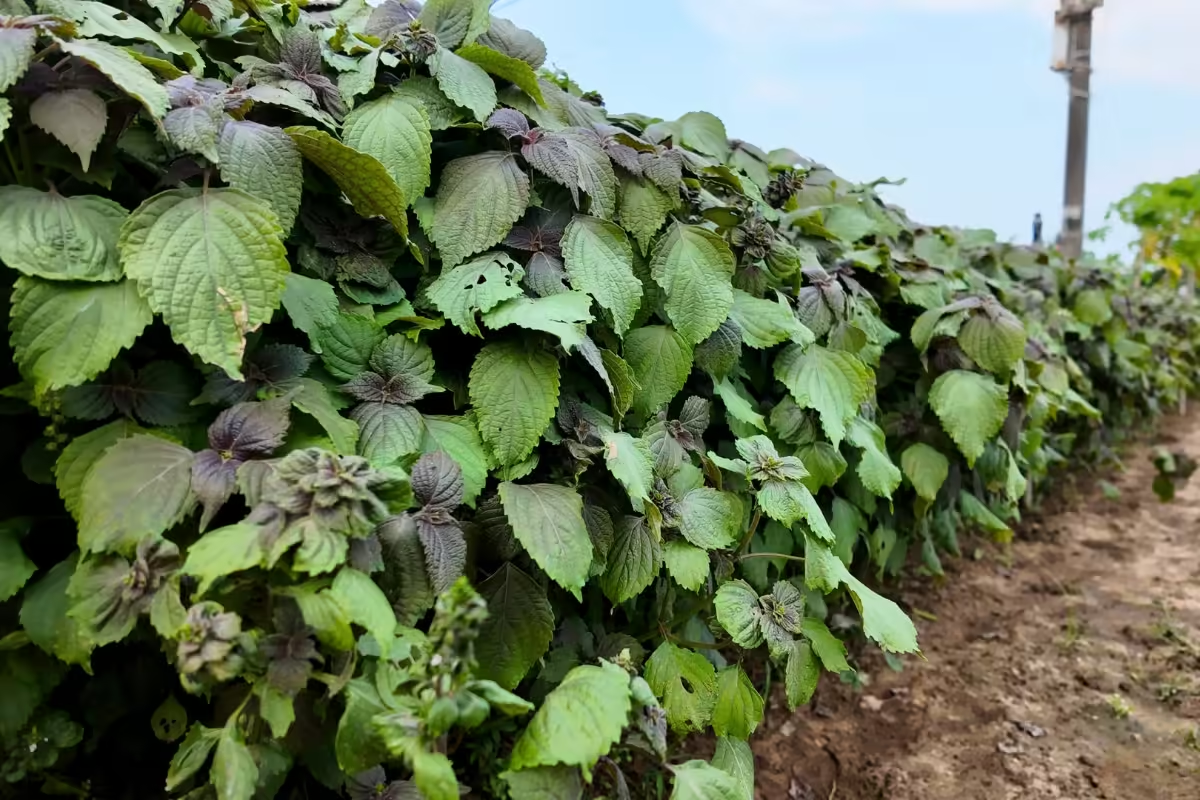
Characteristics of Vietnamese Perilla
Leaves
Vietnamese perilla leaves are bicolored, with the top side usually green and the underside a soft purple hue. The leaves are oval to slightly heart-shaped, typically measuring around 10 cm in length and 5 – 7 cm in width. They have serrated edges and a soft, slightly fuzzy texture.
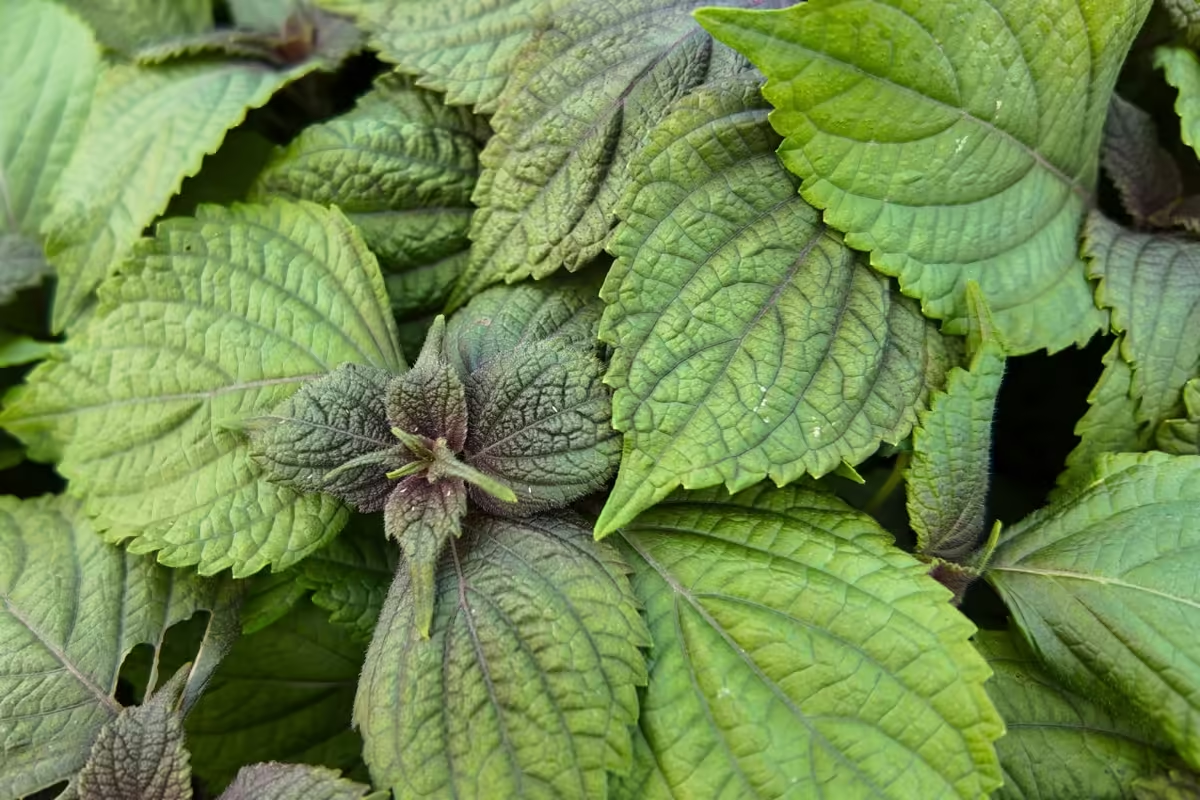
The green tops of Vietnamese perilla leaves
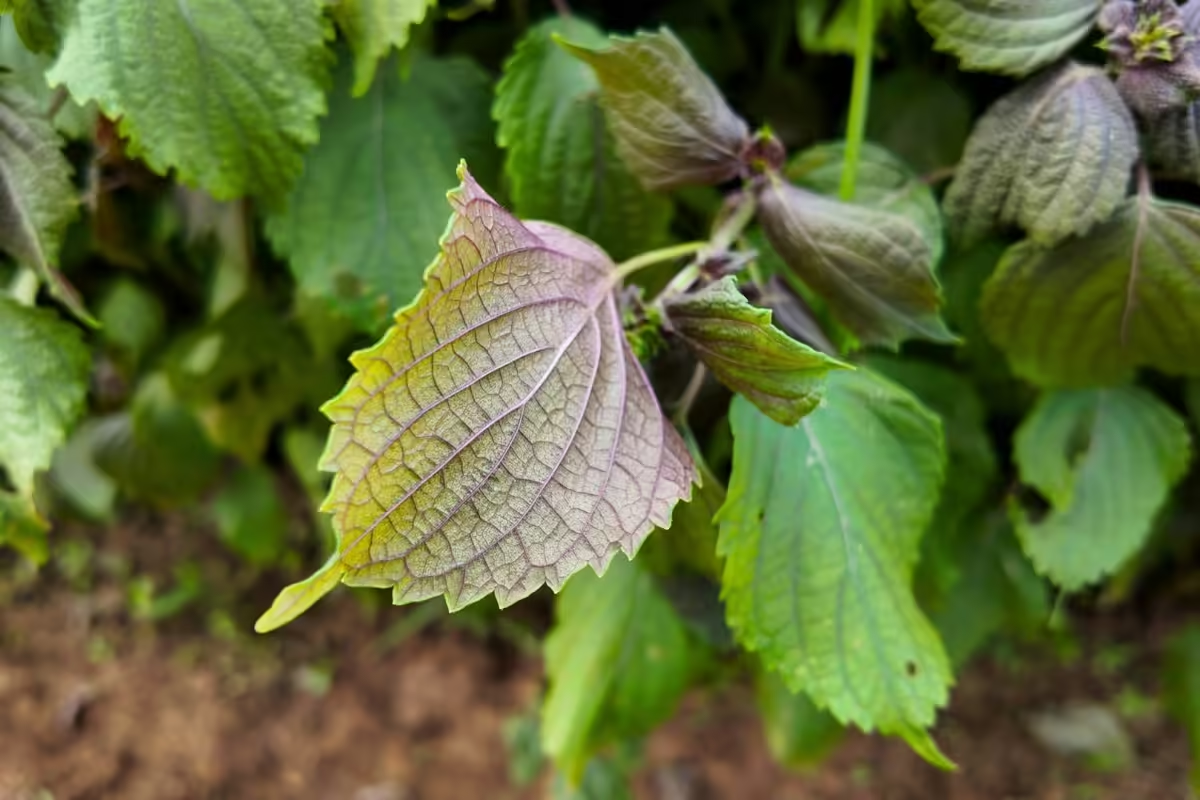
The purple underside of a Vietnamese perilla leaf
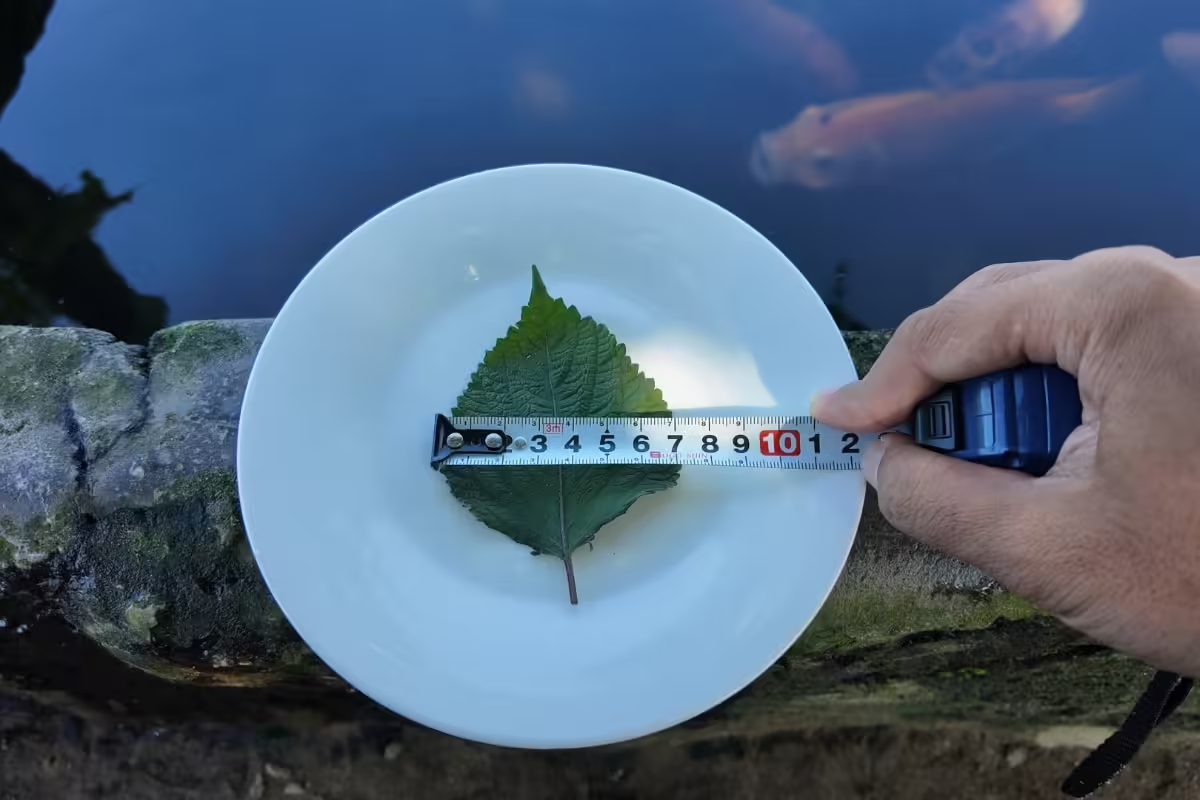
Measuring the width of a Vietnamese perilla leaf
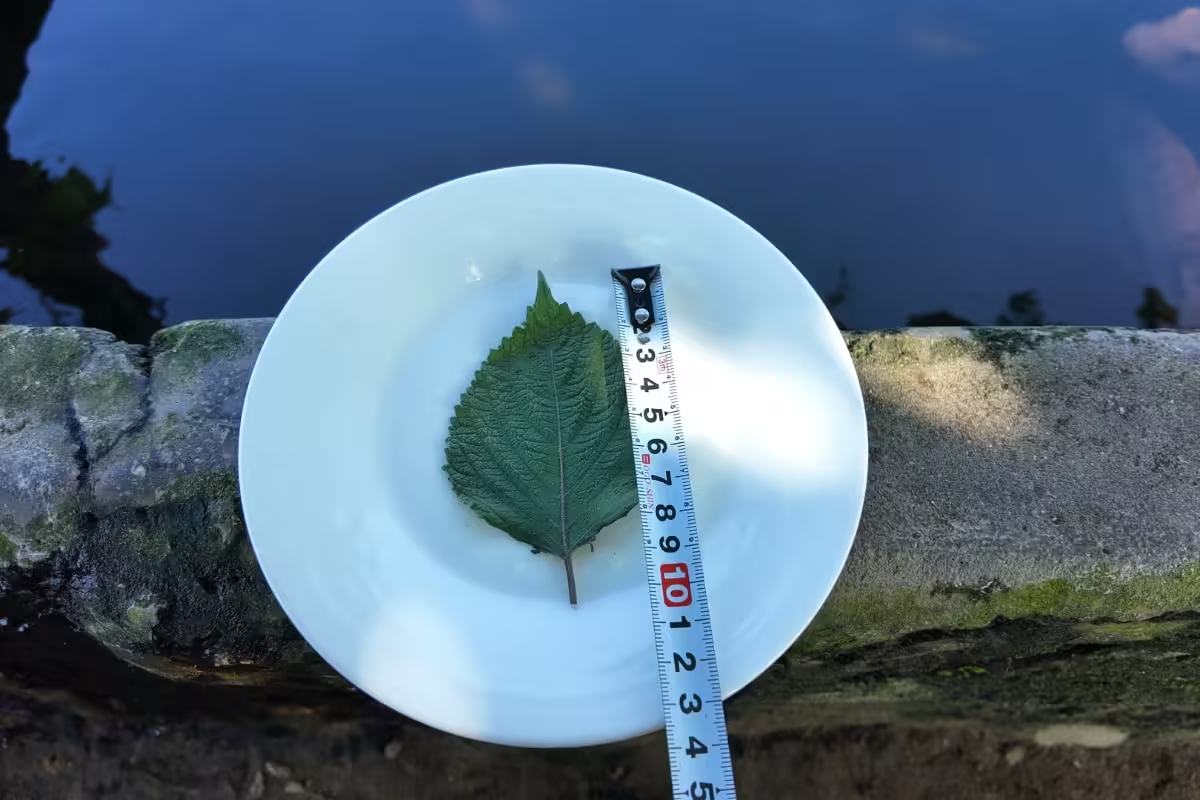
Measuring the length of a Vietnamese perilla leaf
Stems
The stems are square-shaped, usually green with a hint of purple, slightly hairy, and often branch out, allowing the plant to grow into a bushy form about 40 to 60 cm tall.
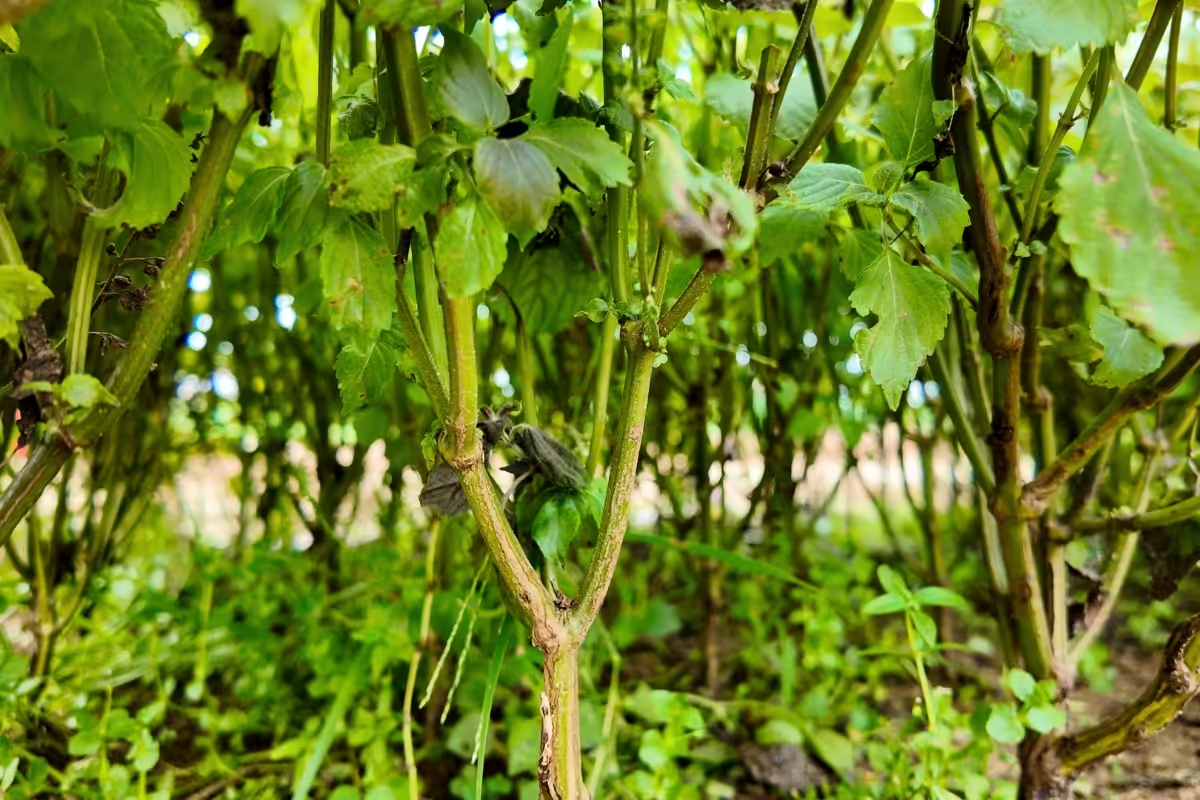
The lower stem of Vietnamese perilla plants

The upper green stem of Vietnamese perilla plants
Flowers
Small and delicate, the flowers usually appear on spikes at the ends of stems. They are typically white to pale pink and are not the main feature of the plant, but signal the start of seed formation.
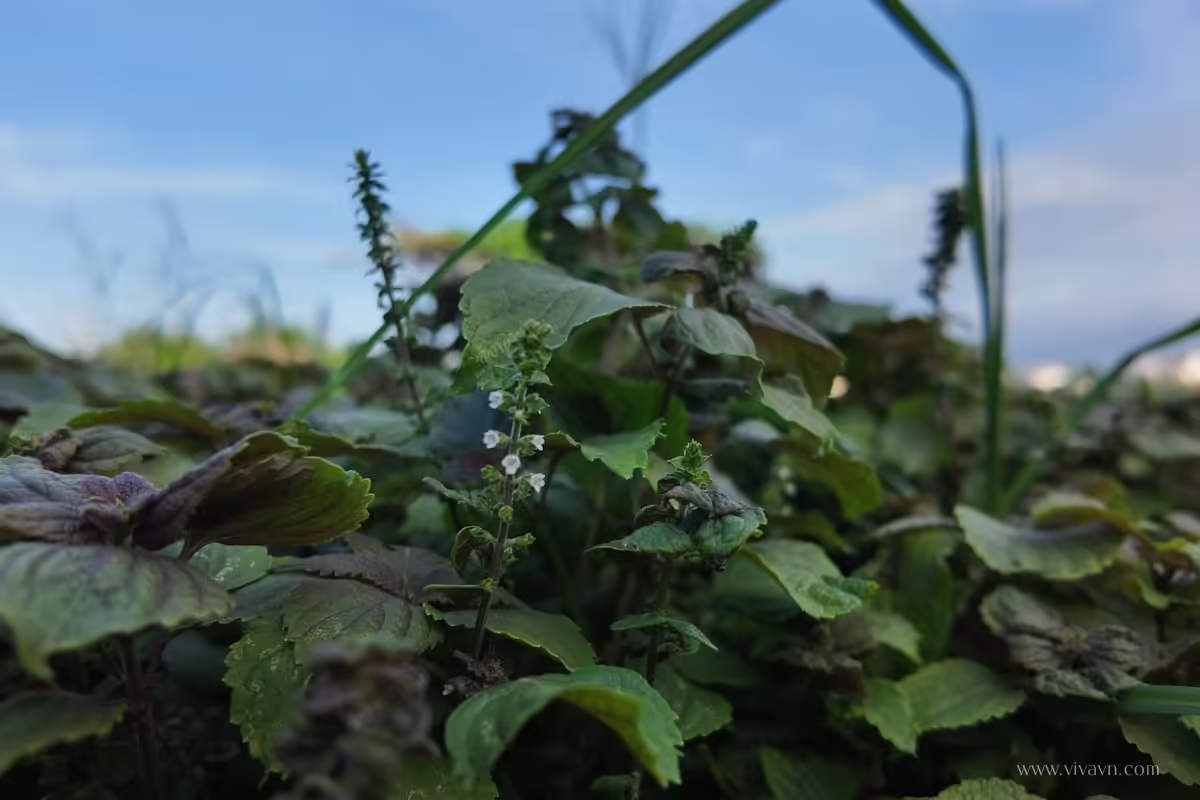
Small white and pale pink flowers on a Vietnamese perilla plant
Aroma and flavor
Vietnamese perilla has a bold, peppery fragrance with subtle hints of mint, anise, and basil. Its taste is slightly spicy with a mild herbal sweetness. This strong aroma is a key reason it’s prized in cooking and herbal medicine.
Cultivating and harvesting Vietnamese perilla
Ideal climate and soil conditions
Vietnamese perilla grows best in warm weather. In Vietnam’s tropical climate, it can be cultivated year-round, but the plant grows most vigorously from March to September when temperatures are high and rainfall is moderate. It prefers loose, fertile soil with good drainage and can grow in full sun or partial shade. While the plant loves moisture, it doesn’t tolerate waterlogged soil, so proper drainage is essential to keep the roots healthy.
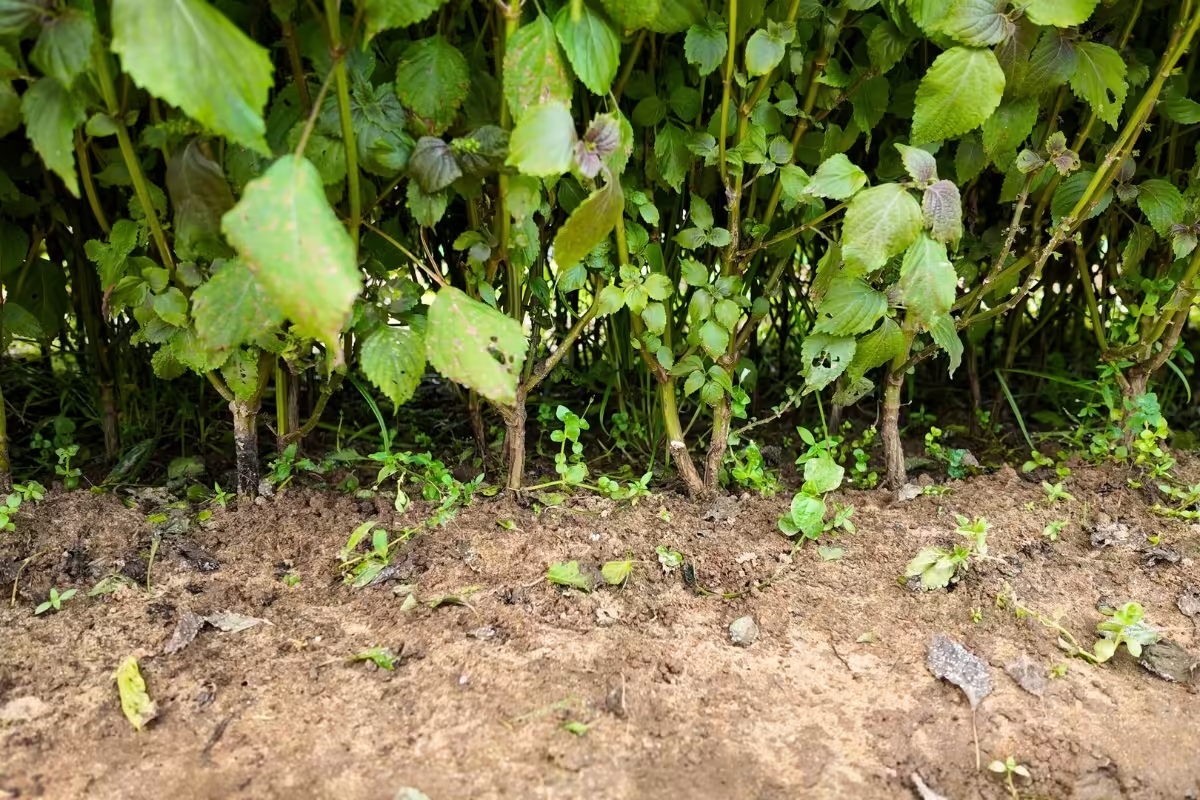
The right soil for healthy Vietnamese perilla
Harvesting and care tips
During hot, sunny days, water Vietnamese perilla twice a day—once in the morning and once in the late afternoon. From the time of sowing, it typically takes about 35 to 40 days for the first harvest. In Vietnam, farmers usually harvest by trimming the top stems. About a week later, the plant regrows and is ready for the next round of harvesting.
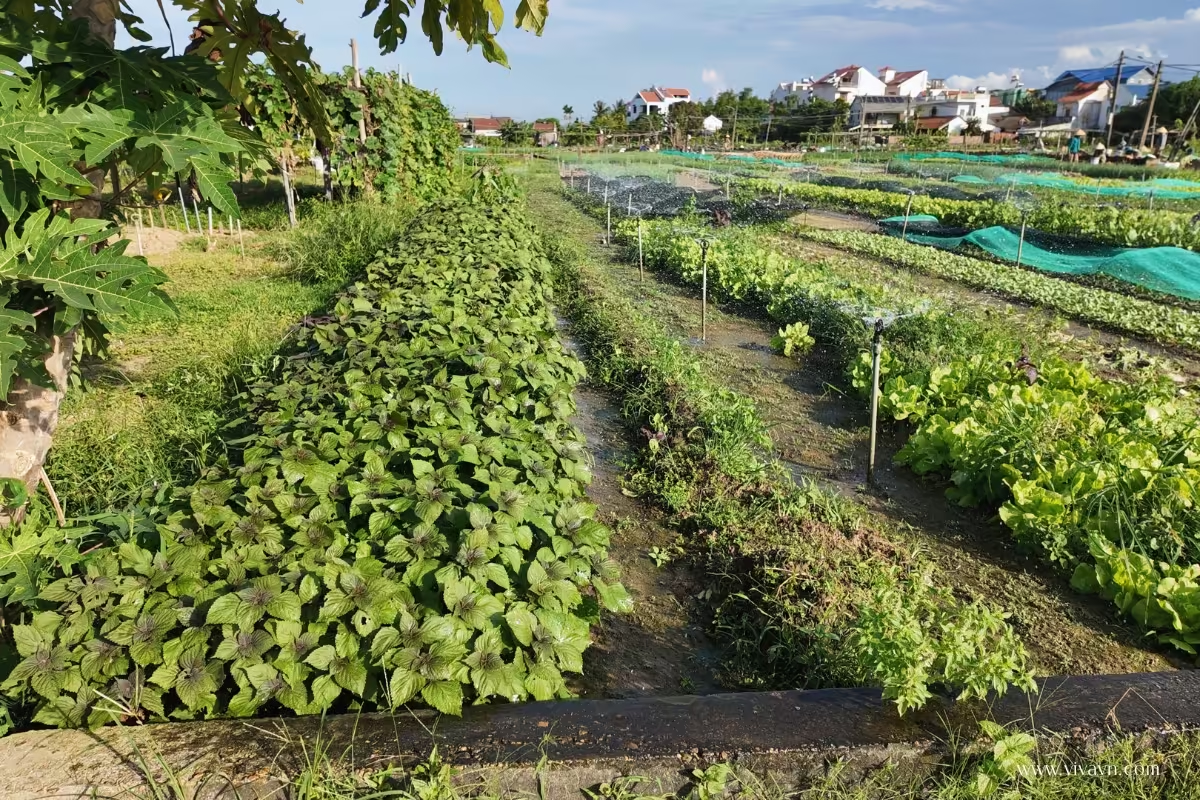
Automatic watering for Vietnamese perilla plants
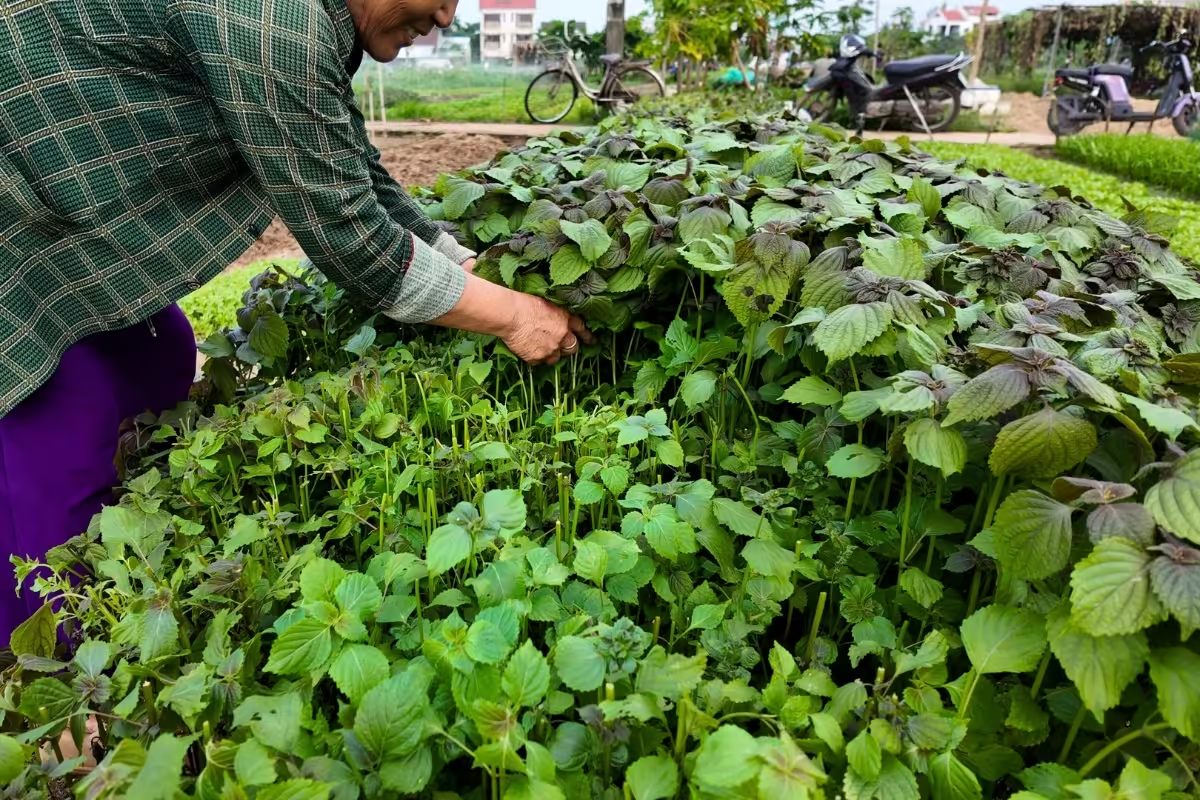
A Vietnamese farmer harvesting perilla leaves by hand
Health benefits of Vietnamese perilla
Vietnamese perilla is more than just a flavorful herb—it’s long been recognized in traditional Asian medicine for its wide-ranging health benefits. According to recent scientific studies, Perilla contains numerous bioactive compounds that offer powerful anti-inflammatory, antioxidant, and antimicrobial properties (Wu et al., 2023).
Anti-inflammatory and respiratory support
Compounds such as perilla ketone (PK) and rosmarinic acid found in the leaves help suppress pro-inflammatory cytokines like TNF-α and IL-6. These effects may support relief from conditions such as allergic reactions, asthma, and chronic respiratory inflammation.
Antioxidant protection
Perilla leaves are rich in flavonoids and phenolic acids, known antioxidants that help protect cells from oxidative stress and age-related damage. This may contribute to better cardiovascular, skin, and immune health.
Antimicrobial and antifungal activity
Essential oils from Perilla frutescens have been shown to inhibit bacterial growth and prolong the shelf life of food by disrupting harmful microorganisms, especially Candida albicans and Enterococcus faecalis.
Mood and brain support
Animal studies suggest that long-term intake of perilla seed oil or extracts may help reduce depressive symptoms by regulating brain inflammation and boosting neurotrophic factors, offering a natural option for supporting emotional well-being.
Other benefits
Research also highlights potential effects in supporting weight management, bone health, digestive health, and even cancer prevention. These findings are still emerging but show great promise for the future of perilla as both food and functional medicine.
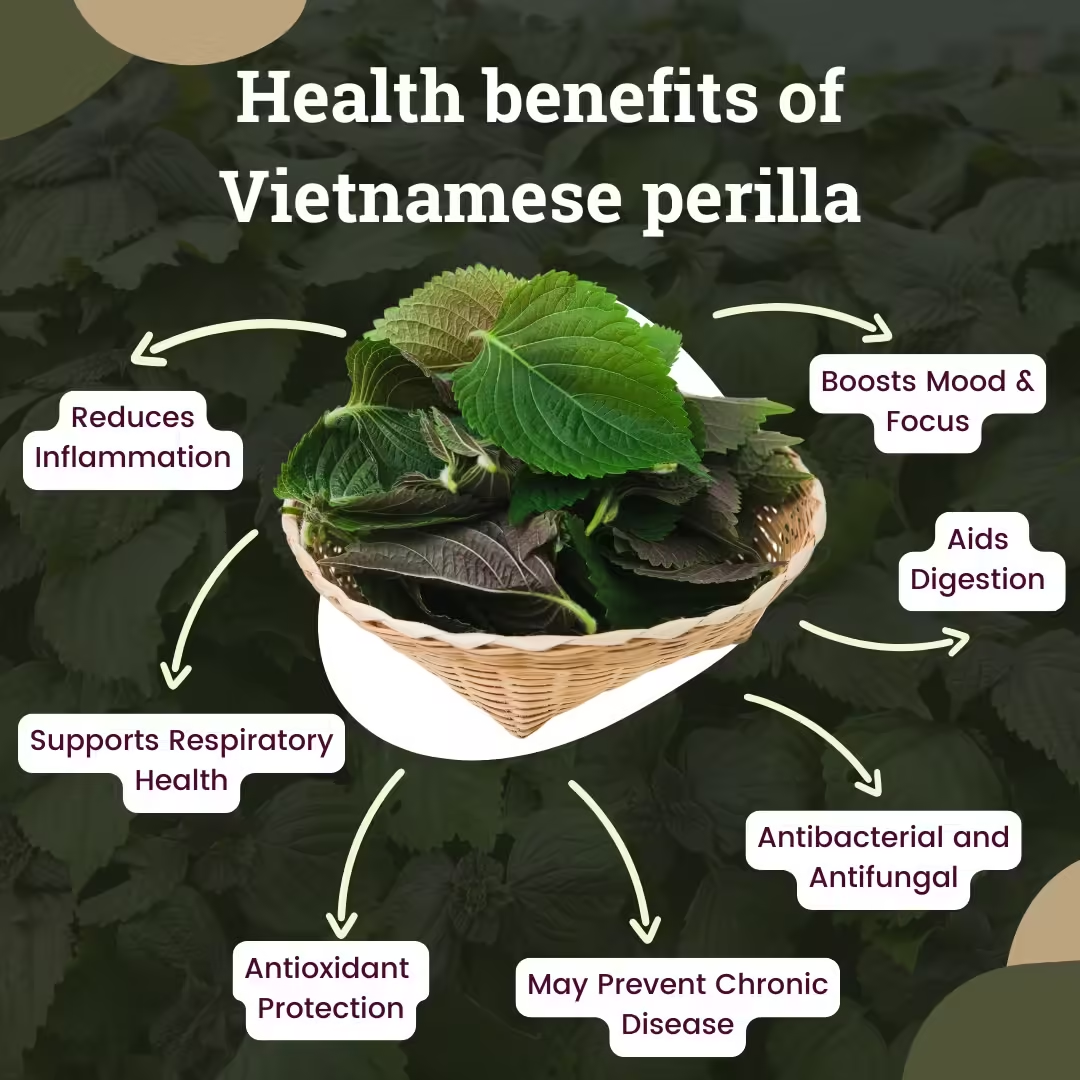
Culinary uses of Vietnamese perilla
Vietnamese perilla leaves are commonly used fresh in herb platters, added to soups, or cooked with meat and seafood to enhance flavor. Their bold aroma helps balance strong ingredients, and the herb is also valued in traditional remedies.
Perilla as part of Vietnamese fresh herb platters
In many Vietnamese noodle dishes like bun cha, bun bo Hue, or bun thit nuong, a plate of fresh herbs is always served on the side, and Vietnamese perilla is almost always part of it. Its bold, slightly peppery flavor pairs well with other Vietnamese herbs like fish mint, coriander, and Thai basil, adding brightness and complexity to every bite.
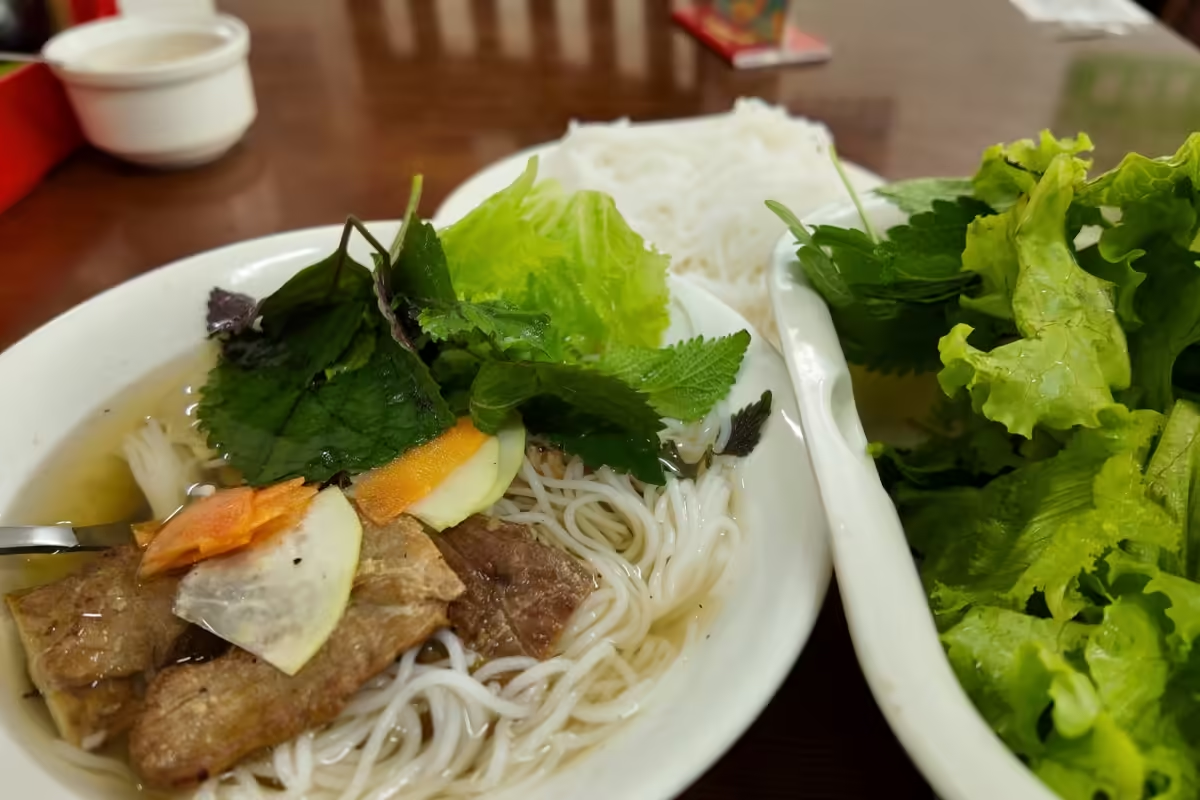
Bun cha served with fresh perilla leaves and a classic Vietnamese herb platter
Fried perilla pork rolls
Another creative way to enjoy Vietnamese perilla is by using its leaves to wrap seasoned ground pork. The rolls are then pan-fried until crispy on the outside and juicy inside. The perilla leaves not only hold the filling together but also infuse the meat with a rich, herbal aroma.
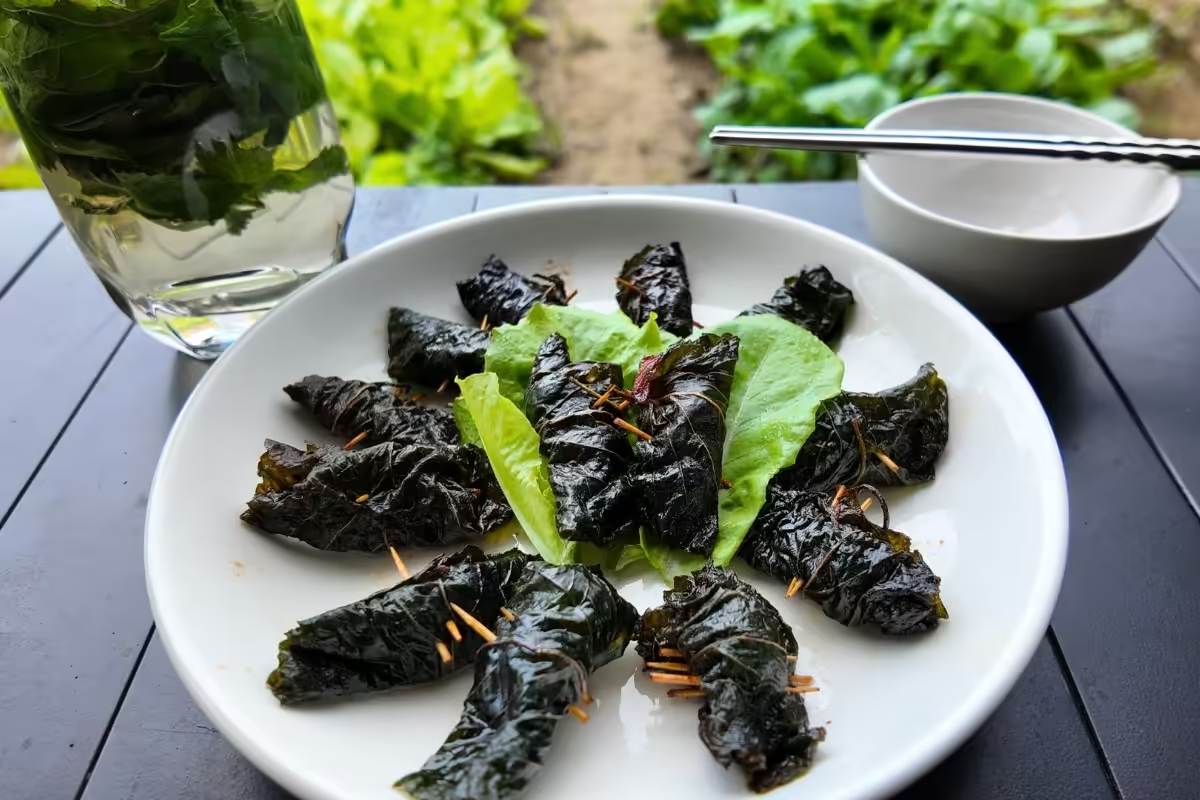
A plate of crispy perilla pork rolls—flavorful, and wrapped in fragrant perilla leaves.
Using perilla leaves in rice porridge to ease cold symptoms
A common remedy in Vietnamese folk medicine for colds is a bowl of rice porridge cooked with perilla leaves, shallots, and a dash of crushed black pepper. It’s typically eaten while still warm, as the steam and herbal aroma are believed to help relieve early symptoms of illness.
Brewing perilla tea with fresh or dried leaves
In Vietnam, perilla tea is often made using fresh leaves, dried leaves, or even powdered perilla leaves. The leaves are steeped in hot water to create a light, herbal infusion that’s traditionally used to help ease digestion, reduce stress, and promote relaxation.
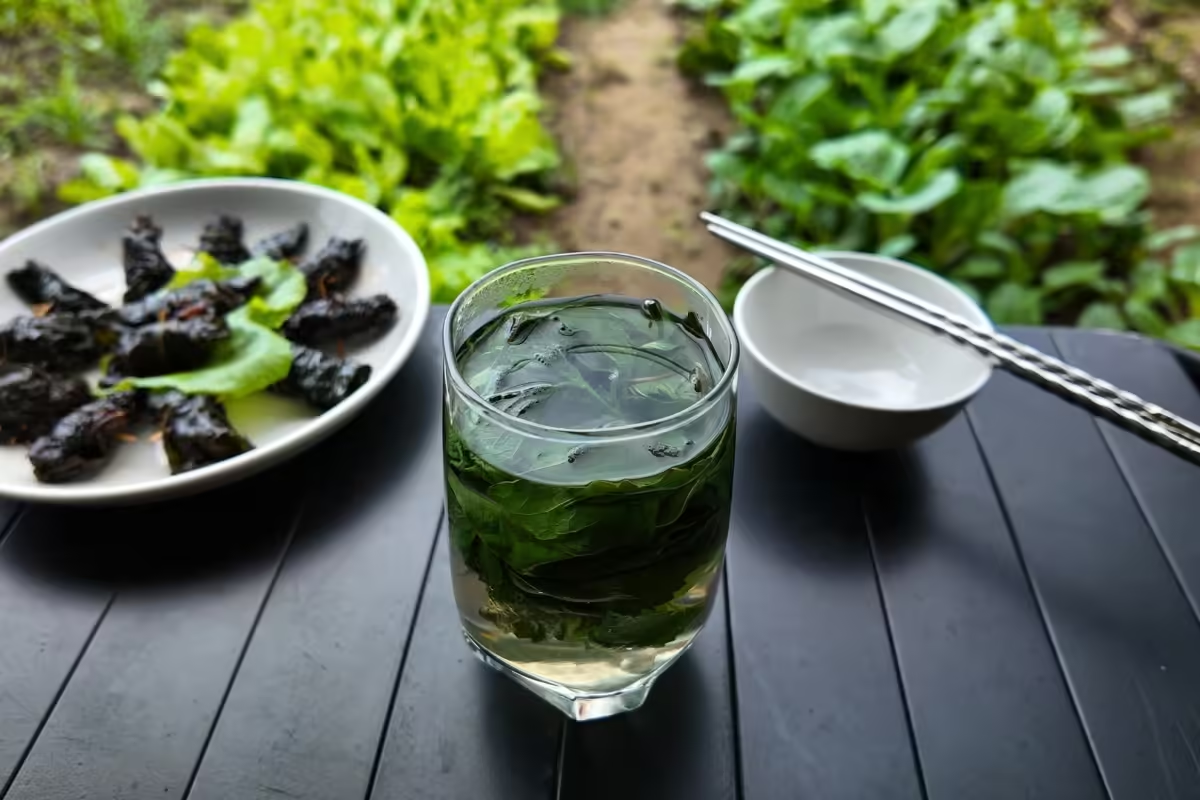
A glass of freshly brewed perilla leaf tea, filled with calming herbal aroma
Frequently asked questions about Vietnamese perilla
What is perilla leaf called in Vietnamese?
It’s called “tía tô”, a leafy herb known for its use in Vietnamese cuisine and traditional medicine.
What does Vietnamese perilla taste like?
It has a bold, herbal flavor with hints of mint, anise, and basil—slightly spicy with a mild sweetness.
How do you grow Vietnamese perilla?
You can grow Vietnamese perilla either by sowing seeds or using stem cuttings. Both methods are simple and effective.
Can I grow perilla at home?
Yes, you can easily grow perilla at home. It thrives in warm, humid conditions and prefers loose, well-drained soil. With enough sunlight and regular watering, this herb grows quickly and can be harvested multiple times throughout the season.
How long does it take to harvest Vietnamese perilla for the first time?
It typically takes about 35 to 40 days from sowing to the first harvest.
Share on FacebookShare on X (Twitter)Share on PinterestShare on WhatsappShare on LinkedinShare on TelegramShare on Email
- https://www.youtube.com/@VivaVNOfficial
- https://www.facebook.com/vivavnofficial2024
- https://www.pinterest.com/vivavnofficial/
© 2025 VivaVN. All rights reserved.

Leave a Reply